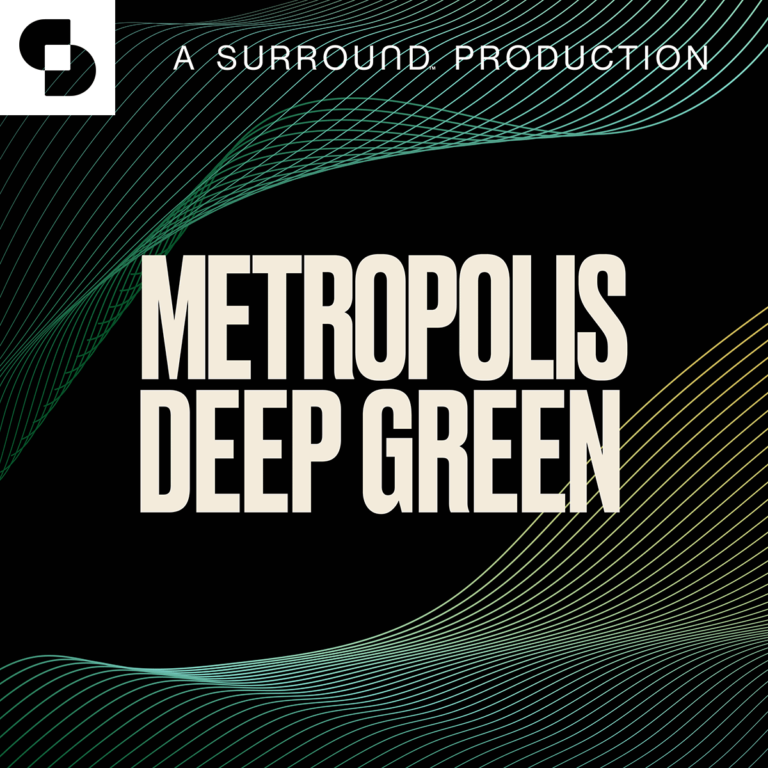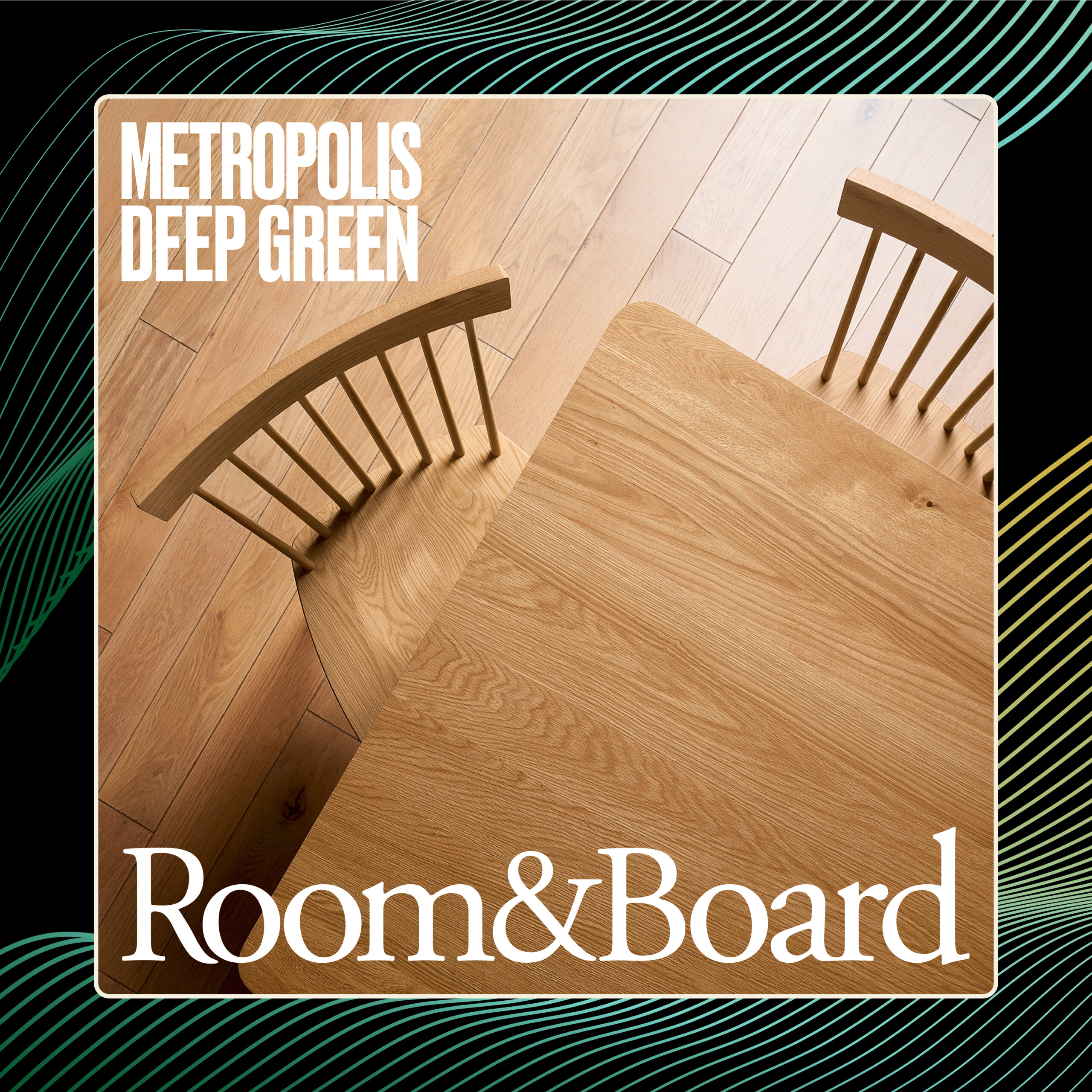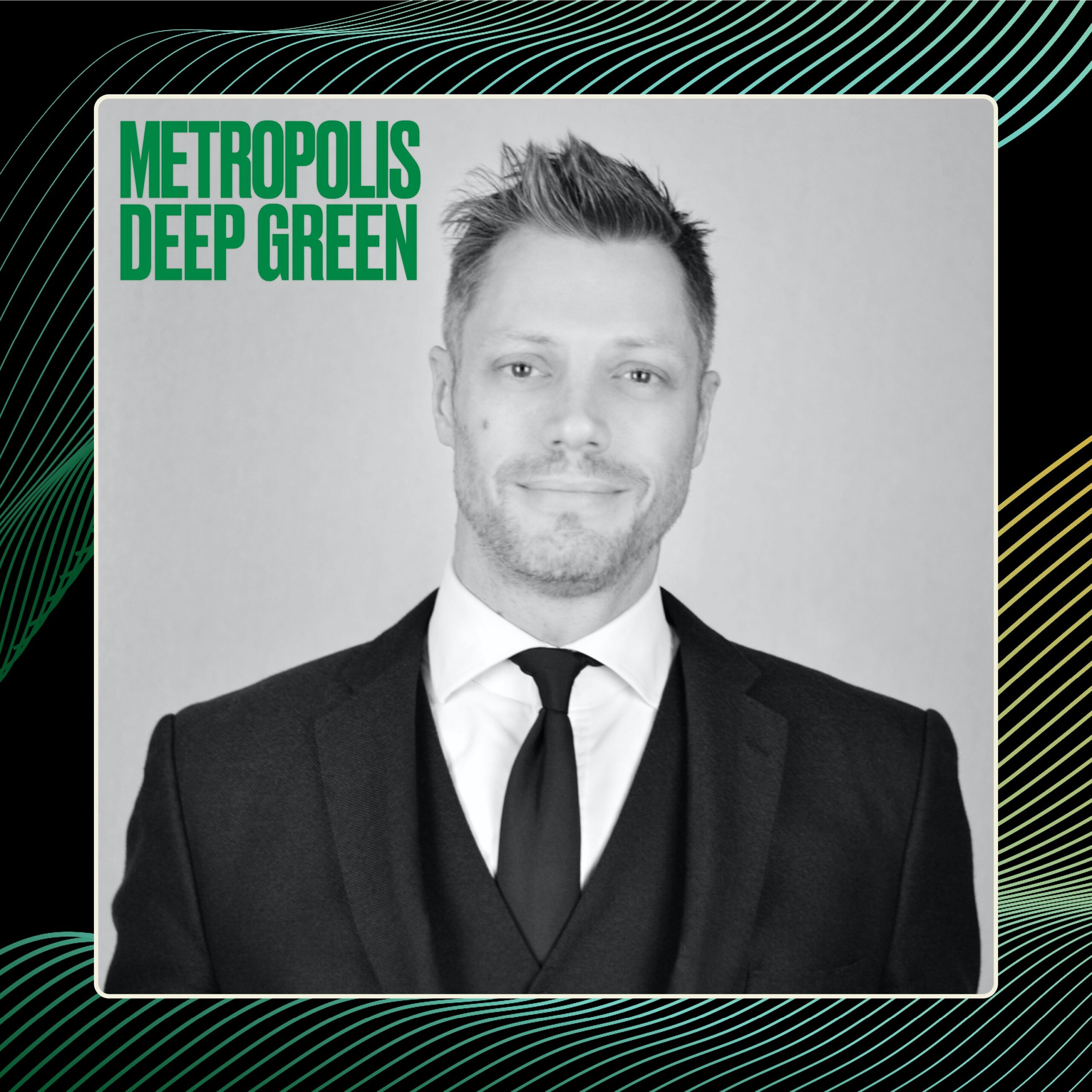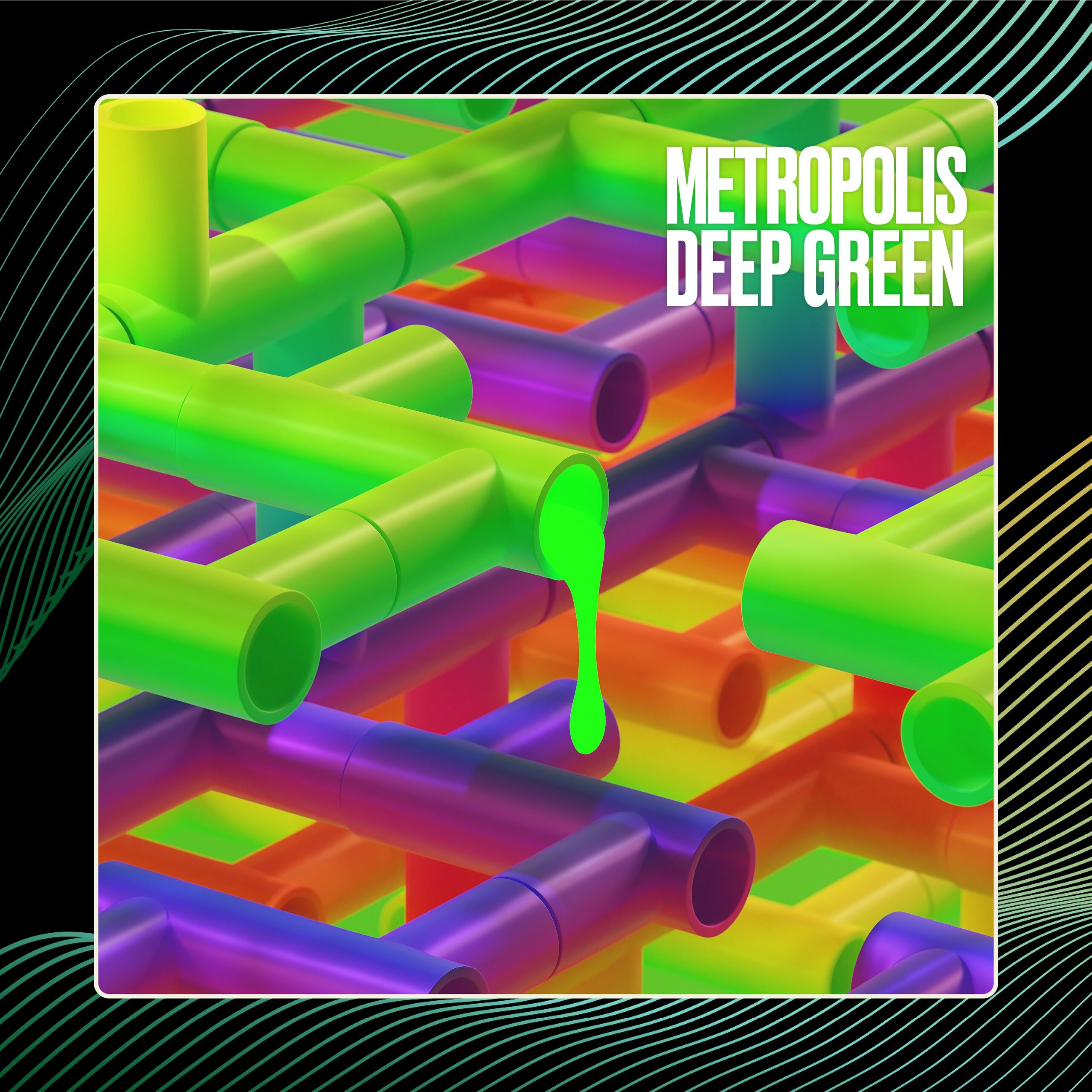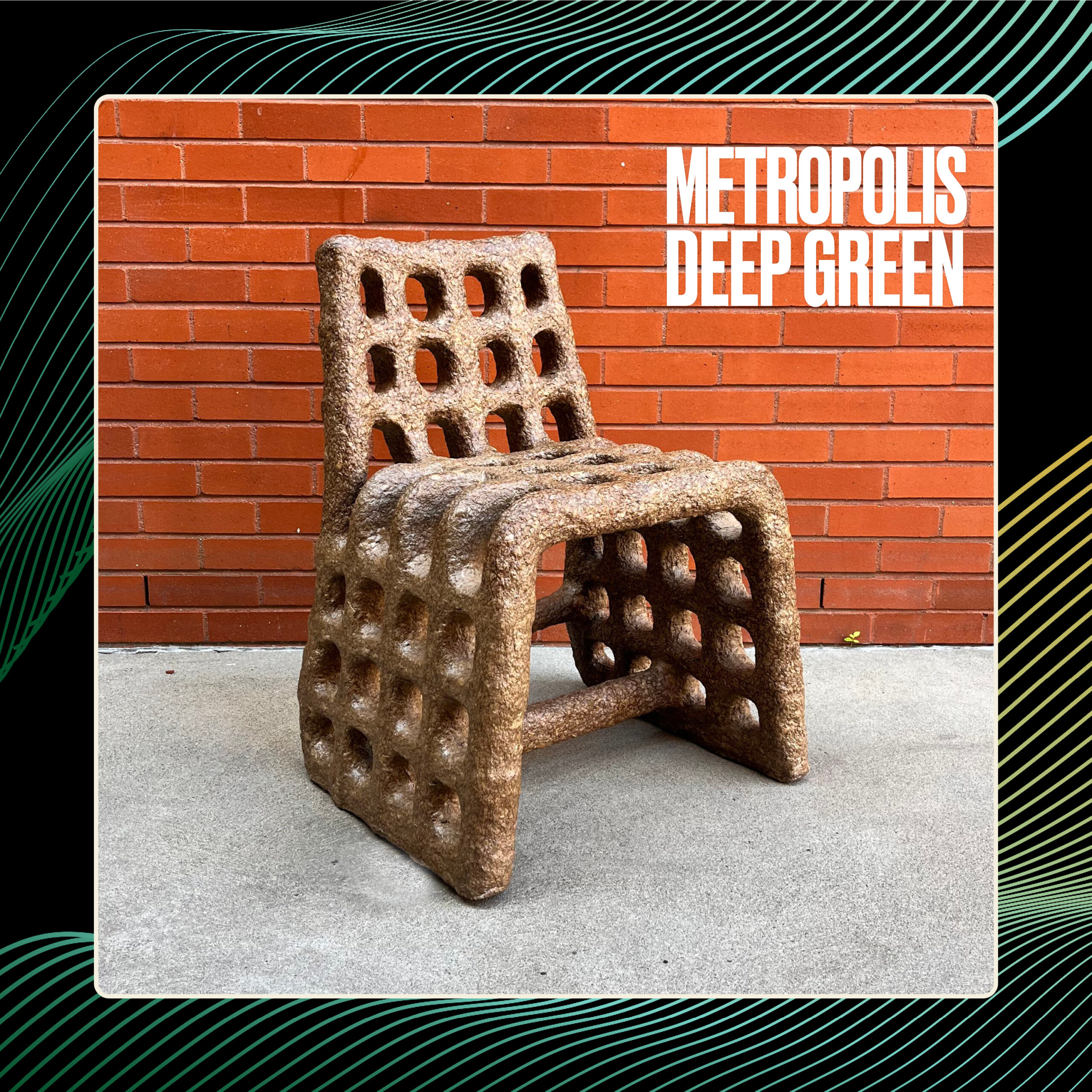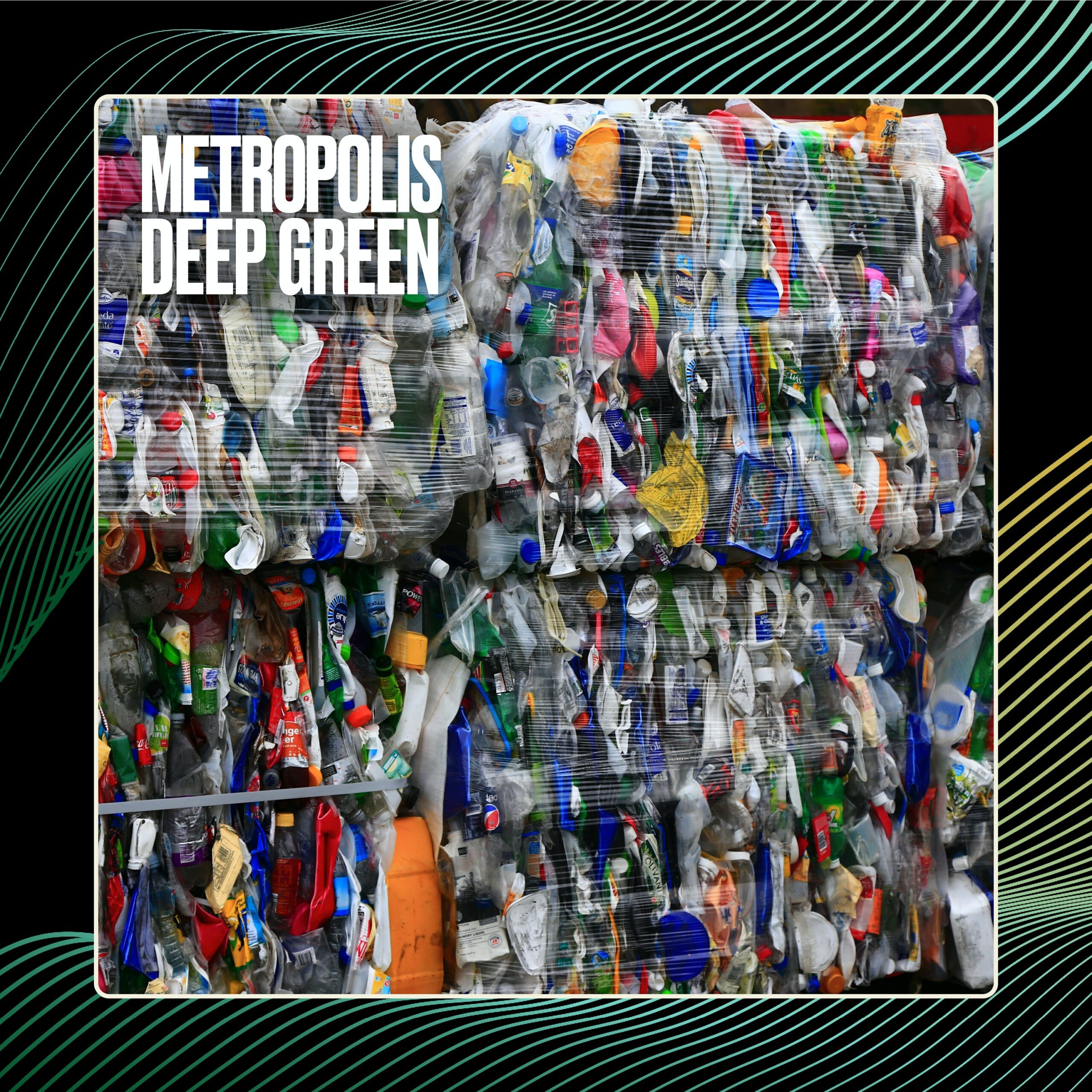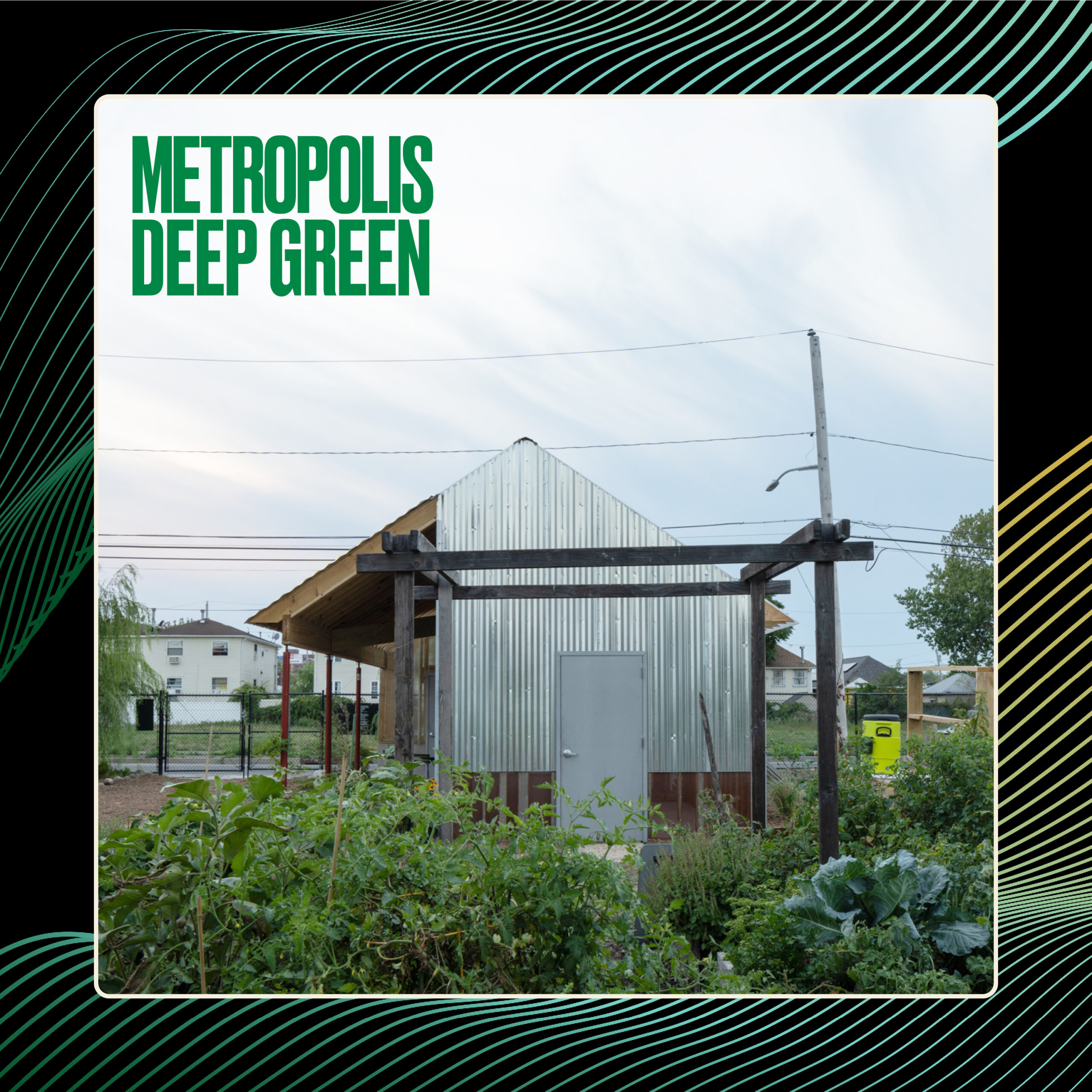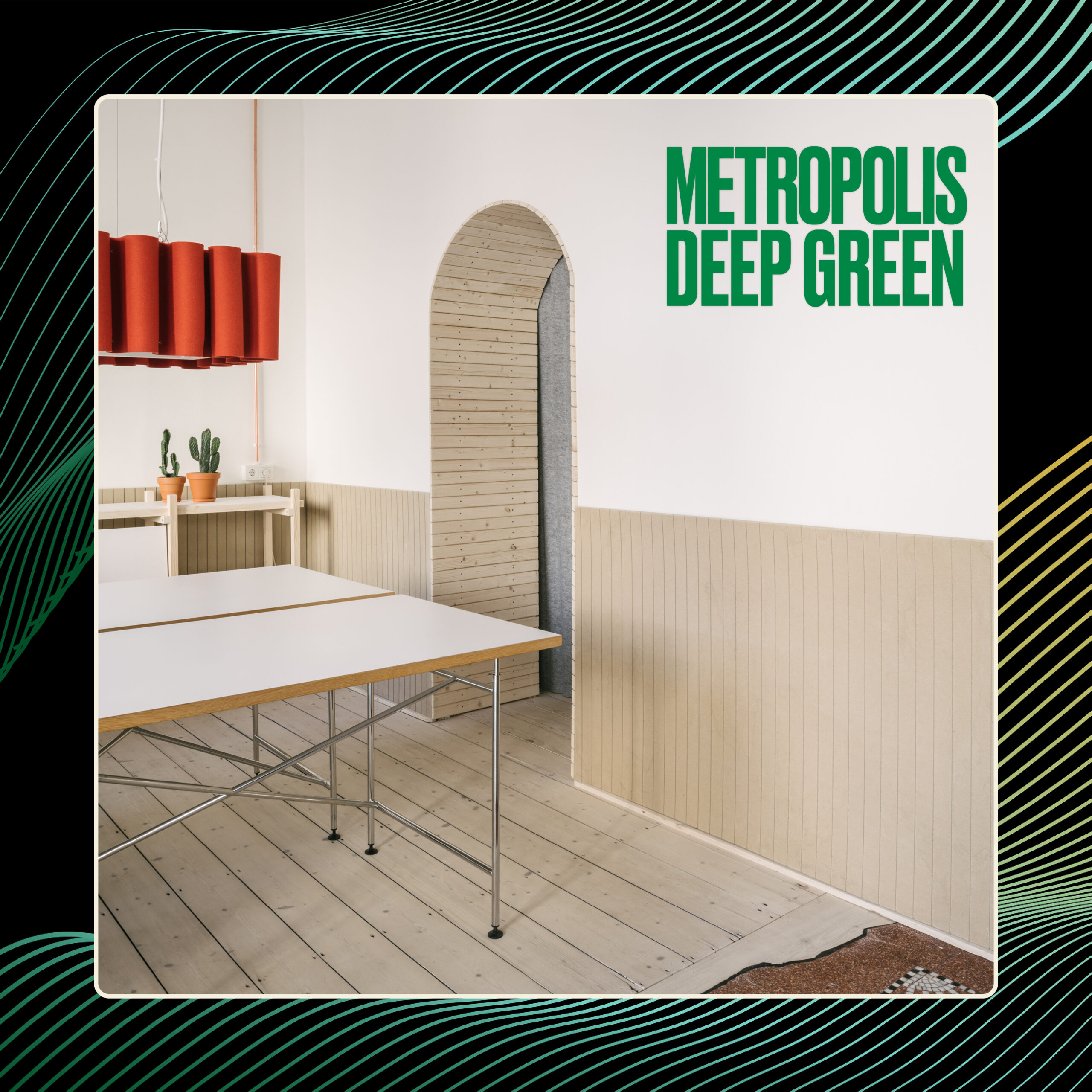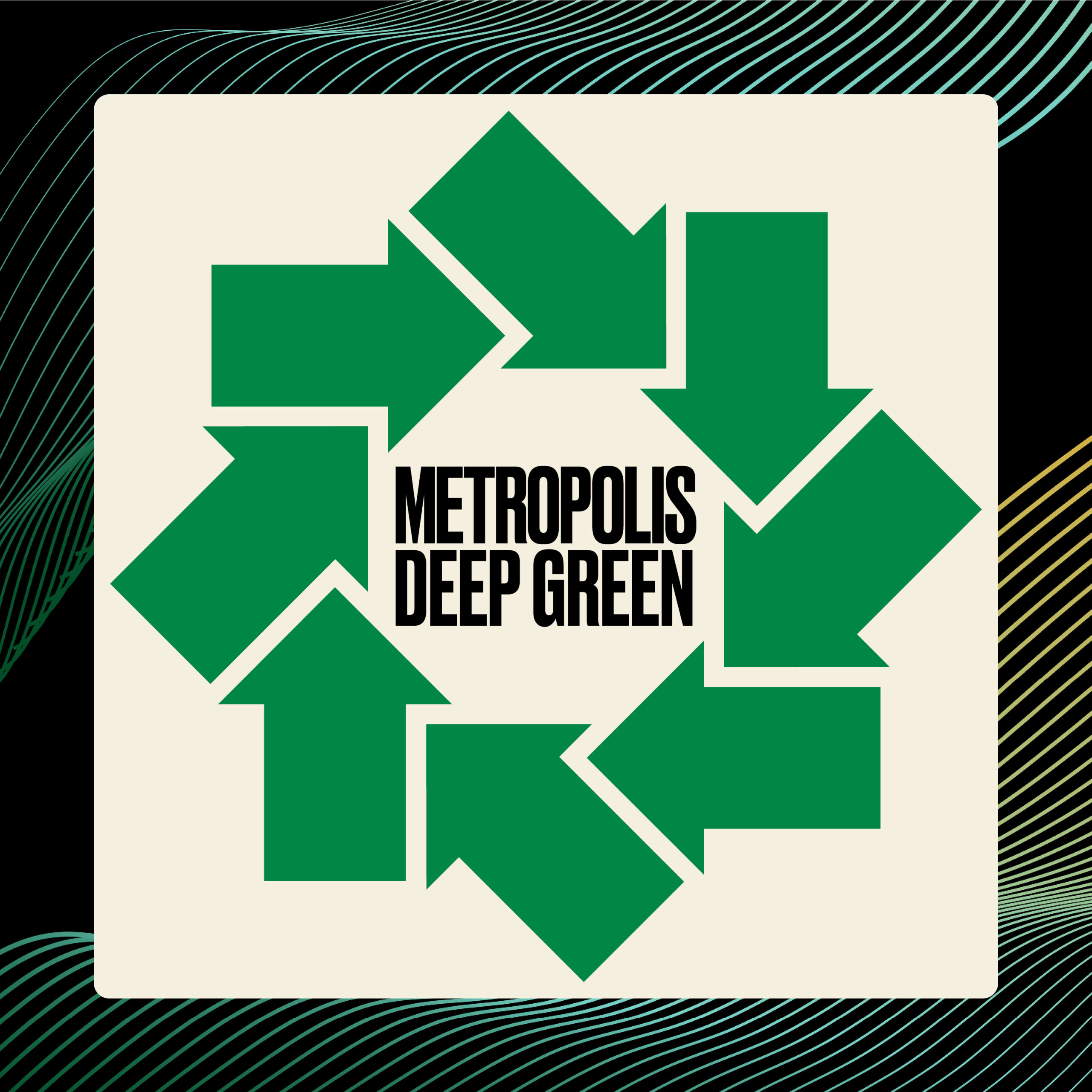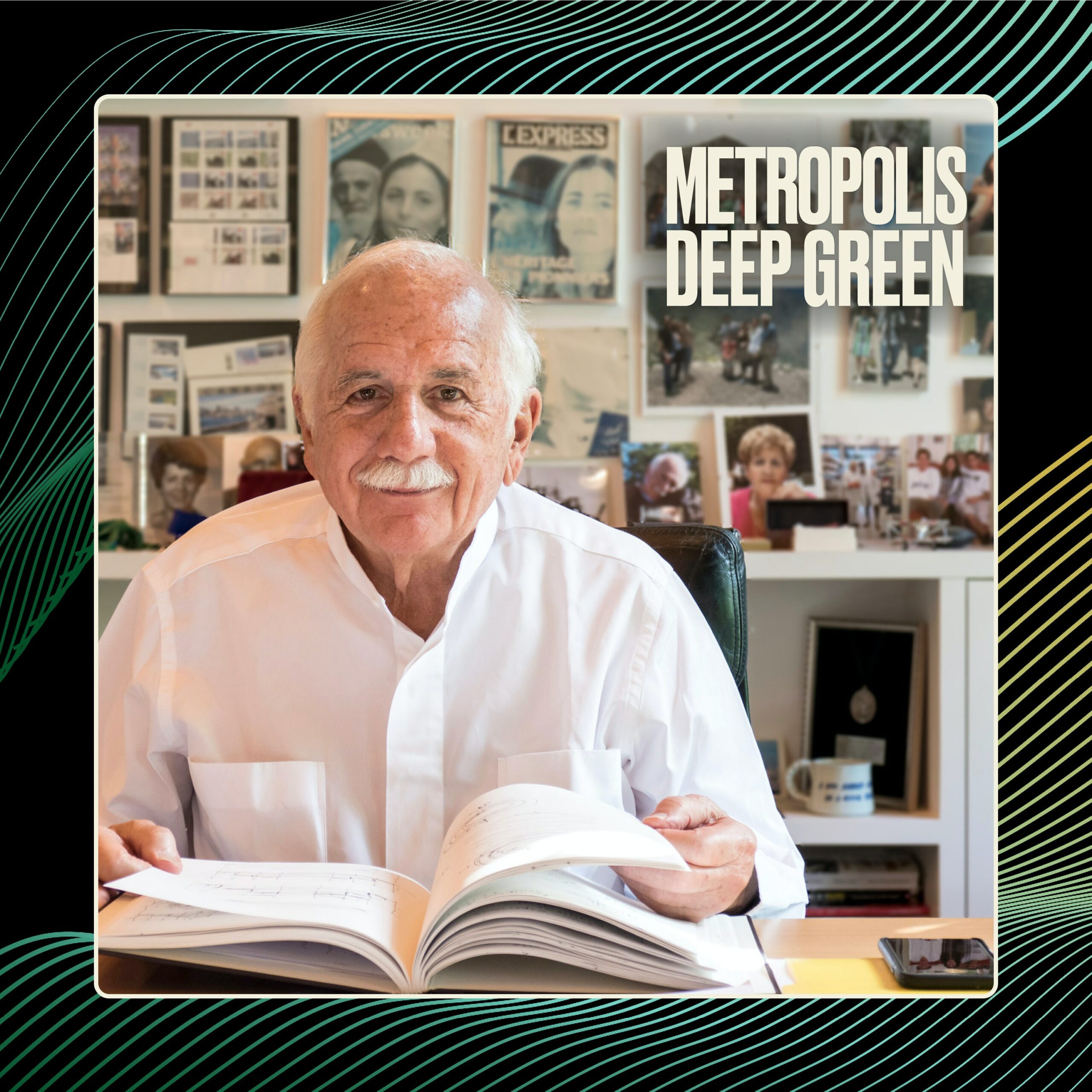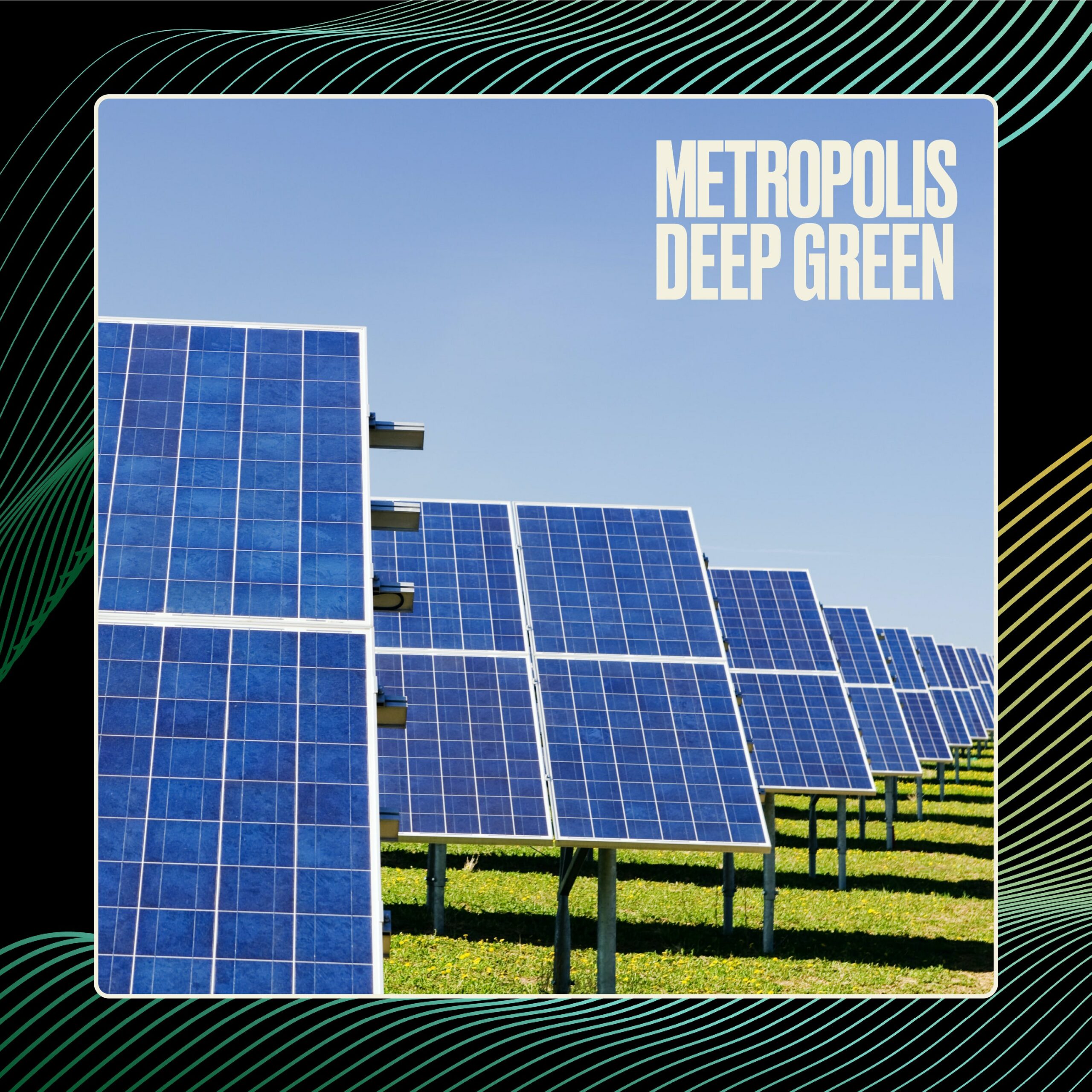Interior designers work with stuff, day in and day out—chairs, tables, lights, countertops, tiles, wallpaper. The research company ThinkLab estimates that the average interior designer has over about 26 times the buying power of the average consumer. Of course, most interior designers are buying that stuff on behalf of their clients. But the key thing here is that interior designers have influence. How can they use it to do better by people and the planet?
Interior designer Laurence Carr is a trailblazer and an advocate in this area. Carr believes in design that is restorative and regenerative. Which means she doesn’t want to just stop at doing less harm to the environment, she believes that design can actually help restore balance between humans and their ecology, and can allow natural systems to regenerate.
In this episode, Metropolis’s senior editor Kelly Beamon sits down with Carr to discuss the myriad alternatives available to interior designers today, what challenges persist, and how we can all be a bit more responsible with the stuff in homes, offices, hotels, and other spaces.
Connect with Metropolis:
Instagram: @metropolismag
Facebook: facebook.com/MetropolisMag/
Deep Green is a production of SANDOW Design Group.
[00:00:00] Avi: Welcome to Deep Green, a biweekly show about how the built environment impacts climate change and equity. Deep Green brought to you by Metropolis. I’m your host Avi Rajagopal. Buildings are some of the biggest things we make as human beings. So, if you want to know how we can do better for the environment and all life on this planet, you have to understand buildings and cities and all the things that go into them.
[00:00:38] Avi: And that’s what we want to help you with here at Deep Green
[00:00:47] Avi: interior designers, work with stuff day in and day out. Chairs, tables, lights, countertops, tiles, wallpaper. The research company think lab estimates that the average interior designer has about 26 times the buying power of the average consumer, of course, most interior designers are buying that stuff on behalf of their clients.
[00:01:14] Avi: But the key thing here is that designers have influence how can they use that influence to do better by people and the planet? Interior designer Laurence Carr is a trailblazer and an [00:01:30] advocate in this area. Carr believes in design that is restorative and regenerative, which means she doesn’t want us to just stop at doing less harm to the environment.
[00:01:41] Avi: She believes that design can actually help restore balance between humans and their ecology and design can allow natural systems to regenerate Metropolis, senior editor. Kelly Beman sat down with car recently to discuss the myriad alternatives available to interior designers today. What challenges persist with sustainable design and how we can all be a bit more responsible with the staff in our homes, offices, hotels, and other spaces.
[00:02:12] Avi: Here are Kelly Beaman and Laurence Carr.
[00:02:15] Kelly: So I am privileged to have a conversation today with Laurence Carr, an expert in regenerative design, an ardent champion of circular economies, executive producer, and host of her earth XTV original series, Shay Lawrence and CEO and creative director of her namesake, New York based design studio.
[00:02:41] Kelly: Well, I’ll just jump right in. Give me your definition of regenerative design, please.
[00:02:47] Laurence Carr: The regenerative design is part of what I call S. Design. It means that the way we are going to design it will allow us to avoid waste. [00:03:00] And use resources, materials, and products that contributing to the continuous loop of the earth.
[00:03:10] Kelly: As an interior designer, your aesthetic. It seems very natural. I would love to hear your views on the advancements that we’ve seen taking place and replacement of plastics, recycling of plastics, and hopefully the successful diversion of plastic. From landfills. Can this be part of the wellness narrative, these types of product?
[00:03:34] Laurence Carr: That’s a great question, Kelly, you know, encouraging to see these efforts in recycling plastic.
[00:03:42] Laurence Carr: However, having said that, I do understand, you know, being a little bit skeptical about plastic. We talk so much about plastic, but the fact is that, you know, on this planet, we have an overload of plastic. We found it in our oceans. We found it everywhere in landfills. I mean, even us, you know, it’s demonstrated we humans, the 21st century, we, we have plastic in our body, unfortunately. So I think it’s just important to, to try to recycle plastic as much as possible. , I’m thinking of one company called Unify who really makes sure that they have a whole, um, series of products made of, um, recycled plastic from the ocean.
[00:04:23] Laurence Carr: I think there are other companies who are doing that as well. So your question, I think, you know, it’s important to [00:04:30] integrate that. So it doesn’t end up in the landfill. If I can, myself personally avoid designing with plastic, even recycled plastic. I do everything for that. Actually I, I try to go more through fibers, natural fiber, you know, natural materials call noble, cause they’ve been around for centuries.
[00:04:49] Laurence Carr: Um, and also for new bio-fabricated next generation healthy materials that are coming up in the market. You know, as people are really looking into finding closed loop and regenerative materials manufacturers are really actually in Europe. Some of them that I know well in Europe are really working on.
[00:05:06] Laurence Carr: So that would be, you know, the way I, I would go where that’s preferable. Yeah. And in general, I mean, it’s not just plastics, of course, recycling lots of different content wood paper, lead points are tied to the amount of recycled content in many of these materials. I mean, you’veed, if you can, for. Health and wellness, you would avoid plastics.
[00:05:31] Laurence Carr: Is there another way or path to distancing ourselves or maybe separating the streams that you see that designers can choose or in terms of their material choices? So you mean like other ways when using plastic or using recycled plastic? Yes, or even, I mean, there are experiments happening with biobased plastics.
[00:05:53] Laurence Carr: Mm-hmm, I’m not sure of all of the details of that, but yes, I think the healthy material lab, um, you know, [00:06:00] which I’m a real advocate, I’m a, you know, person matter. I graduated there and I just hold that wonderful certificate that John Zara roof and, and Alison meals have co-founded alpha material labs at Parsons.
[00:06:13] Laurence Carr: When you. Of design. I do think they just recently had a presentation about bioplastic and I think that’s just important to definitely use, you know, some of those, if I’m correct, I think they had, they had a presentation about that and, and they were talking about, you know, luxury vinyl tiles, which I think is is a great option compared to what’s in the market.
[00:06:35] Laurence Carr: And what’s been around, you know, we we’ve huge amount of chemicals. Now in terms of designers having other options, there are a lot of options, you know, using stone, using wood for certified by forest stewardship council and or green guard, depending on the European certifications. There’s a lot of, of wood that can be used reclaimed as well.
[00:06:57] Laurence Carr: And then, you know, fibers, natural fibers. I mean, they are like Leann. We have a wool. We have to know where to source wool, you know, I mean, does it come from Australia and New Zealand, Marin? No wool. And, but how naturally made is it, you know, from there, I think there’s some investigation that’s worth doing.
[00:07:15] Laurence Carr: Cause Marino is one of the largest woo markets in the world, but you know, maybe also inquired, but Irish woo. There is Irish wall, you know, with, um, a local sheep that are really well made, you know, with local farmers. Yeah, there, there’s plenty of, [00:07:30] of ways, I guess. And, and, and none of this is new, you know, silk has been around forever.
[00:07:34] Laurence Carr: I mean, cotton as well. I think we have to really investigate word sourced. And how is it made? We wanna just make sure that it’s, you know made fairly as well, you know, for local communities, but also that it’s made, you know, without pollutant the best way we can, you know, and sometimes we found that traditional ways are some of the best, you know, using natural dye.
[00:07:58] Laurence Carr: We go back to traditional practices that been around for, for centuries and, and, and exploring those are really worth it. So talking about the us and in the us, we also have, you know, local craftmanship and the way they are doing, whether it’s wood and, you know, dying. Some of the materials looking for finishes that are made of wood deep clean will be back after short commercial.
[00:08:26] Laurence Carr: Deep Greenis brought to you by Mohawk group, a Metropolis sustainability next partner, Mohawk groups. Waterways project is a mobile showcase. Coming soon to a city near you. It features new product innovations and demonstrates Mohawk. Group’s commitment to leaving a positive hand print on local waterways.
[00:08:50] Laurence Carr: Learn more about the roadshow and register today to be a part of the journey. At Mohawk, waterways.com.[00:09:00]
[00:09:04] Laurence Carr: Welcome back to Deep Greenand here’s Metropolis editor, Kelly Beman and interior designer, Laurens Carr.
[00:09:14] Laurence Carr: I think that I definitely. , companies that, that have been in the business of using plastics, either as a component or as their main, you know, ingredient for many years are, are starting to realize that, but those that have been in the industry or been doing this, have this manufacturing system set up for longer, it seems that at the best that they could do is recycle the waste.
[00:09:40] Laurence Carr: Right? Yes. So. It sounds like if that’s the best that, that they could do at this point. But in terms of affordability, interior designers who may be specifying, perhaps it’s a big commercial job with a tight budget and not necessarily a high end residential job, sometimes it’s even harder, isn’t it for them to avoid some degree of plastic.
[00:10:04] Laurence Carr: So if we are to speak to those designers, It helps to know that companies like three form, for instance, they’ve gone to great length to develop special manufacturing methods, to recycle the waste that comes from manufacturing, their own products and looking, you know, to use that as a source of the material.
[00:10:23] Laurence Carr: But now they’ve said that they need a new source of recyclable P E T, right. [00:10:30] and I’m thinking, wow, I didn’t anticipate that as a problem. Although it makes logical. So now there’s this middleman industry that we see. I, and I, for lack of a better word, selling, you know, found or captured waste back to the manufacturers.
[00:10:48] Laurence Carr: What are your thoughts on this? Well, I think it’s just two ways to see it. You know, that it’s a positive we really have to look into the live cycle assessment of a product, as you mentioned, Kelly. And by that, I mean, you know, where was it sourced? How is it made all the different parts of a supply chain who participated in making it, and then how was it transported?
[00:11:09] Laurence Carr: How did it end up in a showroom retail or, you know, at the end place, and then what’s the longevity of a product and where is it going to end up again? You know, we, we want to strive to avoid for it to end up in the landfill. I think that’s an important point to, to, to really understand that and also strive to to make sure that within this supply chain they are solutions. And it seems that these middle man, you know, description that you gave are part of a solution. If we are positive about that aspect. And, and we wanna make sure that we have people who take care of that part of a supply chain and try to find ways to use waste and, you know, transform it, which is really the, the word I use, upcycling it, to make a product, cuz that’s what we want to do is that to make it kind of a new product by transforming. So I, I, [00:12:00] I see it as a positive. Now. It depends on what you add to it. We have to be really sure that, you know, whatever is it is made of it doesn’t contribute with more pollutant or, or any other chemicals that would be not beneficial for the end users.
[00:12:14] Laurence Carr: So that’s where I would say, you know, just always, always make sure that there is not just a lucrative goal on there but really a, a real positive way to actually upcycle this product and upcycle waste.
[00:12:27] Kelly: Describe for me your own specifying process, if you don’t mind and how you identify ecologically responsible materials.
[00:12:35] Laurence Carr: Yes, of course. You know, to me, I really address it from the life cycle assessment process. When I go to a manufacturers, I really, really explore where and how the product was sourced. I wanna understand the material that was used at the very, very beginning. And that to me is very important. So you will already define, you know, what is made of to start with.
[00:12:59] Laurence Carr: And then I will really strive to understand from the man manufacturer before asking for standard certification. Cause I guess that’s also part of a very important process for me to identify the credibility of a. But I, but I will ask, you know, how they’re made, you know, and, and to me, it’s important to understand the respect of local communities, where in the us overseas, I have nothing against things being done overseas.
[00:13:24] Laurence Carr: I think it’s part of a global world and, and, and it’s very important to, to embrace and support [00:13:30] global communities. Once I understand how it’s made and if it’s fairly made, I’m a big supporter of fair trade and, and being made socially just, you know, as well, but really in terms of healthy materials and that contribute to wellness, to me, it’s important to understand, you know, how it was cut, how it was assembled, whatever the genre, how were they made? You know, if they, these are products like wood, stone and, and other, you know, raw materials. If there are textiles, I even want to understand more of the technical technology that is used. I love lansing group . It’s one of my favorite, you know, the 10 cell fibers, how they, you know, reduce water.
[00:14:09] Laurence Carr: But save energy and use, you know, tree pulp to make fibers, but they definitely have to use some smart tech there and I’m all for it, you know, but that’s really a part of, of how I decide. And then of course I will definitely look at, you know, which international organization they belong to environmental organization and what standard certification they have.
[00:14:29] Laurence Carr: I mean, it definitely requires as a designer, an interior architect, architects to from the very beginning, you know, having our own list, identifying, doing our due D. But I think it’s part of our power decision to really, really understand, make a point of doing our due diligence and then select and, and, and highlight.
[00:14:48] Kelly: I think that that’s what everyone strives for. Right. They would love to have that kind of information. I wonder how successful maybe medium size firms or smaller firms are when. [00:15:00] Ask for that information, you know, it’s, it’s difficult. It had been in the past difficult to get that level of transparency and people have been relying very heavily on certifications, as you know, do you feel like it’s worked though?
[00:15:13] Laurence Carr: Yes, I do think, I think when you do it, I think it’s easier. You find your language, you expand your knowledge, you educate yourself. I mean, I’m an eternal student, I’m a voracious reader. I think it’s super important to always keep up to date, you know, with what happens. I mean, especially now, you know, since the pandemic we move, like at light speed in technology, but as well as knowledge now that the world is getting smaller because it’s at our fingertips. We also have to move faster and learn and learn faster. Online, online certificate courses it’s, it’s our duty to continue to do that, to follow this knowledge and really understand. So I love the healthy material lab for whatever reason.
[00:15:53] Laurence Carr: I love international living future Institute for that reason as well, you can get LFA certified, you know, living future accredited, certified. I love because you really can expand your knowledge with biofilic design, healthy design material, understanding healthy materials that are there available. You know, I haven’t mentioned, you know, the declaration act for manufacturers to actually really relate to that.
[00:16:16] Laurence Carr: And I understand what it means for transparency, understanding the red list, the red list, that organization that really highlights the level of chemicals that are in every product. Material products. And that’s how we raise awareness. We [00:16:30] only are able to identify a few, you know, I mean a dozen, you know, right now, I mean, what does it mean for all the other ones that we are not identifying yet?
[00:16:38] Laurence Carr: When it will, it will grow as the demand will grow. I mean, I’m an ambassador of sustainable furnishing council and I think that’s a fantastic coalition of manufacturer designer architect, and another trade who are part of it, actually large companies. You know, we have William Sonoma room and for companies like this, we tell companies that have a huge impact on consumer.
[00:17:00] Laurence Carr: We can all, you know, use our wallet. Power to actually ask more and more to large companies, large retail companies, such as smaller midsize, you know, businesses, what the product are made of where do they come from? These questions should just be on the website part, very transparent as a report, you know, or kind of a, a pledge so accessible.
[00:17:22] Laurence Carr: And as you know, you know, the younger generation, I mean, well, younger. Gen Z, you know, really work with their wallet and for them there, this no doubt that ESG, you know, which is really environmental, you know, goals, um, are completely linked with how they’re going to use their wallet. And then look at these brands, only the ones who care for the planet.
[00:17:43] Laurence Carr: Look, the one who care for the future. And these are the ones that go for interior fashion, you know, food. I mean, they are extremely knowledgeable for that. And that has an influence also with a millennial. My answer is very long, but because I’m trying to [00:18:00] say that it’s a holistic way, the same way go to shop to, to a supermarket, you know, to shop for food for our product cares and the interior, how we wash and clean our bodies, as well as our interiors, we are going to shop the same way for manufacturing and polishings, it is all the same holistic approach.
[00:18:23] Kelly: Makes a lot of sense. Well, have said that designers need to adopt a, a more of a culture of care. Like you’re saying, if you care, then those things would naturally follow. That’s beautiful you said about using your buying power, you know, to push, keep the pressure on.
[00:18:40] Laurence Carr: So we have that power and we have to push for it. And as consumers, we all are consumers, you and I, as experts of a topic, I mean, you know, being exposed more and more to it, we, we become more and more experts or the consumer who just wants to decorate their interior event, you know, or just buy anything. But I will say to what you just said to contribute to what you just mentioned, that planetary health . Planetary health is inextricably linked to human health. We have to understand that. So healthy materials is linked to wellness. You know, they both go and they’re intertwined. And the more we understand that, the more we’ll go that direction. One last question. It’s a two part question. Maybe it’s sort of too at I’m sneaking into one how much stock should we put or place in offsets, which are [00:19:30] basically.
[00:19:30] Laurence Carr: Credits that com carbon credits that companies, some manufacturers are purchasing right through programs elsewhere that they claim offset the carbon. That really their, their process continues to admit. And, and it may be a small amount, but these are certainly held up as some of the ways they say that they’re reaching a carbon neutral or low carbon production.
[00:19:55] Laurence Carr: Yeah. That’s one part. The other part is. Is it in any way arrogant to believe that we as humans can actually, we have that we have the power to regenerate and restore NA the systems, the natural systems we’ve already interrupted. I think, you know, to answer the second question, we can try, I think, greater Thunberg we can have this United nations conference and talk about the future of a planet as much as we can and make it beautiful events and have all these gathering from multiple countries, you know?
[00:20:24] Laurence Carr: Us as a human, what can we do physically every day to contribute to it? So I don’t think it’s, you know, necessarily arrogant. It’s a very humble way. What can we each do ? How can we do each our own part every day on a daily basis? That’s how I approach it. You know, humbly what can we do? And I believe if we all have his mindset, then you know, we can help.
[00:20:46] Laurence Carr: We are where we are and we can’t change the way the planet is and, and how things. , and by the way, I just wanna say that we have to really understand that the planet will survive, you know, no matter what it’s done it, you know, in the ice age and before
[00:20:59] Kelly: whether we’re here [00:21:00] or not,
[00:21:02] Laurence Carr: We may not. So it’s not so much about, oh, worrying about the planets. It’s more about really focusing on what can we do ourselves to maybe have a chance at, you know, staying longer on this planet. And then to also up the carbon emission, I think it’s important to purchase this offset. There are business models globally in the world who cannot stop sourcing overseas.
[00:21:23] Laurence Carr: They have to, and they have to continue to have packaging. Packaging is a big part of the secular economy and. How can we find ways, you know, with packaging? So we consume now who are shopping more and than ever with a click of a button, we can just care about this. But anyway, back to global businesses, they need to transport their merchandise from one place to another, and some do it, you know, on a boat. And we understand, and we understand you know, the global supply chain, you know, crisis issues, you know, but also some do it, you know, blah, blah. Yeah. I think one of the best ways to, for them to contribute and they do it, they really purchase offset programs. I think it’s better than doing nothing. You can’t change a business model like this. You know, and especially if you are a company like L. Belgium linen, who, you know, and use linen all over the world, but it’s a natural originative fiber, one of the best in the world, you know, linen, we use it and they have to continue to distribute, but they are one of the most secular model of, you know, one of the fibers on planet earth.
[00:22:25] Laurence Carr: And so his lansing group, you know, who’s based in Austria, but distribute globally in Asia. [00:22:30] So, yes, I think, you know, there’s, there’s there’s some good aspects in participating in these programs.
[00:22:38] Kelly: Thank you so much. Thank you for your input today. It’s very eye opening.
[00:22:44] Laurence Carr: Thank you so much, Kelly. Thank you for having me.
[00:22:50] Avi: Deep Greenis produced by Metropolis. I’m your host Avi Rajagopal. And this episode was reported by Kelly Beman. The podcast is edited by Hannah Viti with support from Lauren Volker. You can find out more about Laurence Carr on her website, laurencecarr.com that’s L a U R E N C E C a R r.com. A big thanks to her and to all the folks at SANDOW design group who support deep green.
[00:23:20] Avi: We’ll be back again in two weeks with another episode of tea, green available, wherever you get your podcasts.

